
The Falklands War was a ten-week undeclared war between Argentina and the United Kingdom in 1982 over two British dependent territories in the South Atlantic: the Falkland Islands and its territorial dependency, South Georgia and the South Sandwich Islands. The conflict began on 2 April 1982, when Argentina invaded and occupied the Falkland Islands, followed by the invasion of South Georgia the next day. On 5 April, the British government dispatched a naval task force to engage the Argentine Navy and Air Force before making an amphibious assault on the islands. The conflict lasted 74 days and ended with an Argentine surrender on 14 June, returning the islands to British control. In total, 649 Argentine military personnel, 255 British military personnel, and three Falkland Islanders were killed during the hostilities.

The Royal Italian Air Force (RAI) was the air force of the Kingdom of Italy. It was established as a service independent of the Royal Italian Army from 1923 until 1946. In 1946, the monarchy was abolished and the Kingdom of Italy became the Italian Republic, whereupon the name of the air force changed to Aeronautica Militare.

Operation Jubilee or the Dieppe Raid was a disastrous Allied amphibious attack on the German-occupied port of Dieppe in northern France, during the Second World War. Over 6,050 infantry, predominantly Canadian, supported by a regiment of tanks, were put ashore from a naval force operating under the protection of Royal Air Force (RAF) fighters.
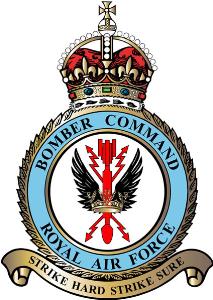
RAF Bomber Command controlled the Royal Air Force's bomber forces from 1936 to 1968. Along with the United States Army Air Forces, it played the central role in the strategic bombing of Germany in World War II. From 1942 onward, the British bombing campaign against Germany became less restrictive and increasingly targeted industrial sites and the civilian manpower base essential for German war production. In total 364,514 operational sorties were flown, 1,030,500 tons of bombs were dropped and 8,325 aircraft lost in action. Bomber Command crews also suffered a high casualty rate: 55,573 were killed out of a total of 125,000 aircrew, a 44.4% death rate. A further 8,403 men were wounded in action, and 9,838 became prisoners of war.
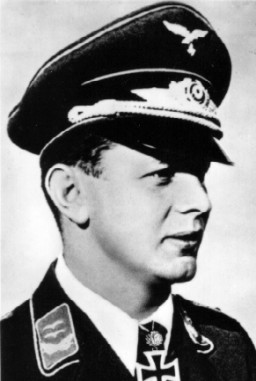
Josef "Pips" Priller was a German military aviator and wing commander in the Luftwaffe during World War II. As a fighter ace, he was credited with 101 enemy aircraft shot down in 307 combat missions. All of his victories were claimed over the Western Front, including 11 four-engine bombers and at least 68 Supermarine Spitfire fighters.

No. 49 Squadron was a bomber squadron of the Royal Air Force from 1938 to 1965. They were the first squadron to receive the Hampden in September 1938.

Operation Overlord was the codename for the Battle of Normandy, the Allied operation that launched the successful liberation of German-occupied Western Europe during World War II. The operation was launched on 6 June 1944 (D-Day) with the Normandy landings. A 1,200-plane airborne assault preceded an amphibious assault involving more than 5,000 vessels. Nearly 160,000 troops crossed the English Channel on 6 June, and more than two million Allied troops were in France by the end of August.

During World War II, the city of Lübeck was the first German city to be attacked in substantial numbers by the Royal Air Force. The attack on the night of 28 March 1942 created a firestorm that caused severe damage to the historic centre, with bombs destroying three of the main churches and large parts of the built-up area. It led to the retaliatory "Baedeker" raids on historic British cities.

No 620 Squadron was a squadron of the Royal Air Force during World War II. During its existence it served as a bomber squadron, airborne forces and a transport squadron.
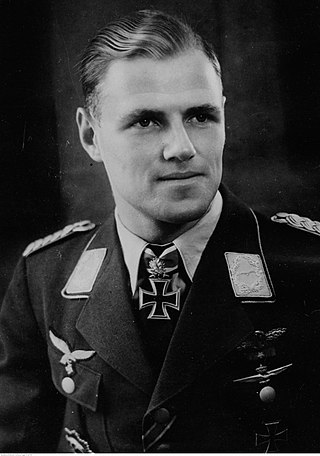
Joachim Müncheberg was a German Luftwaffe fighter pilot during World War II and an ace credited with 135 air victories. The majority of his victories were claimed over the Western Front, with 33 claims over the Eastern Front. Of his 102 aerial victories achieved over the Western Allies, 46 were against Supermarine Spitfire fighters.
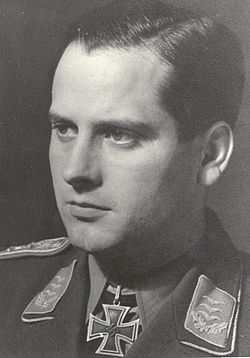
Gerhard Schöpfel was a German Luftwaffe military aviator and wing commander during World War II. As a fighter ace, he is credited with 45 aerial victories claimed in approximately 700 combat missions, all of which on the Western Front.
Number 88 Squadron was an aircraft squadron of the Royal Air Force. It was formed at Gosport, Hampshire in July 1917 as a Royal Flying Corps (RFC) squadron.

No. 238 Squadron is a squadron of the Royal Air Force. It was first formed in 1918 by combining number 347, 348 and 349 Flights at RAF Cattewater by the Royal Flying Corps during the First World War. It was reformed for the Second World War, the Berlin Airlift and currently is a Line Training Flight (LTF) squadron based at RAF Cosford, albeit in a non-flying capacity. It is among those officially acknowledged Battle of Britain squadrons.

Kampfgeschwader 2Holzhammer was a Luftwaffe bomber unit during the Second World War. The unit was formed in May 1939. The unit operated the Dornier Do 17 light bomber, Dornier Do 217 and Junkers Ju 188 heavy bombers. During the course of the Second World War KG 2 lost 767 aircraft destroyed and 158 damaged. According to H.L. de Zeng at al, it suffered 1,908 personnel killed in action or missing in action and 214 as prisoners of war. Broken down further, for the duration of the war KG 2 lost 1,228 killed, 688 missing, 656 wounded and with 214 captured, for a total of 2,786 in both combat and non-combat operations.
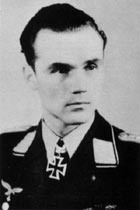
Gerhard Ferdinand Otto Raht was a German Luftwaffe military aviator during World War II, a night fighter ace credited with 58 aerial victories claimed in 171 combat missions making him the tenth most successful night fighter pilot in the history of aerial warfare. All of his victories were claimed over the Western Front in Defense of the Reich missions against the Royal Air Force's (RAF) Bomber Command.

The Commandos formed during the Second World War, following an order from the British Prime Minister Winston Churchill in June 1940 for a force that could carry out raids against German-occupied Europe. Churchill stated in a minute to General Ismay on 6 June 1940: "Enterprises must be prepared, with specially-trained troops of the hunter class, who can develop a reign of terror down these coasts, first of all on the "butcher and bolt" policy..." Commandos were all volunteers for special service and originally came from the British Army but volunteers would eventually come from all branches of the United Kingdom's armed forces and foreign volunteers from countries occupied by the Germans. These volunteers formed over 30 individual units and four assault brigades.

Stanley Maxted was a Canadian soldier, singer, radio producer, journalist and actor. He worked for the Canadian Broadcasting Corporation (CBC) and later for the British Broadcasting Corporation (BBC) as a war correspondent during World War II. Following the war, he became an actor.

The Raid on Sidi Haneish Airfield was a military operation carried out the night of 26 July 1942. A British Special Air Service unit commanded by Major David Stirling attacked a German-held airfield in Egypt during the Western Desert Campaign of Second World War. Several Luftwaffe aircraft used to ferry supplies to the Axis forces were destroyed or damaged with machine-gun fire and explosives. Axis front line units were diverted to reinforce the garrisons in the rear vulnerable to attack.
This is a list of events from British radio in 1945.
This is a list of events from British radio in 1944.

















